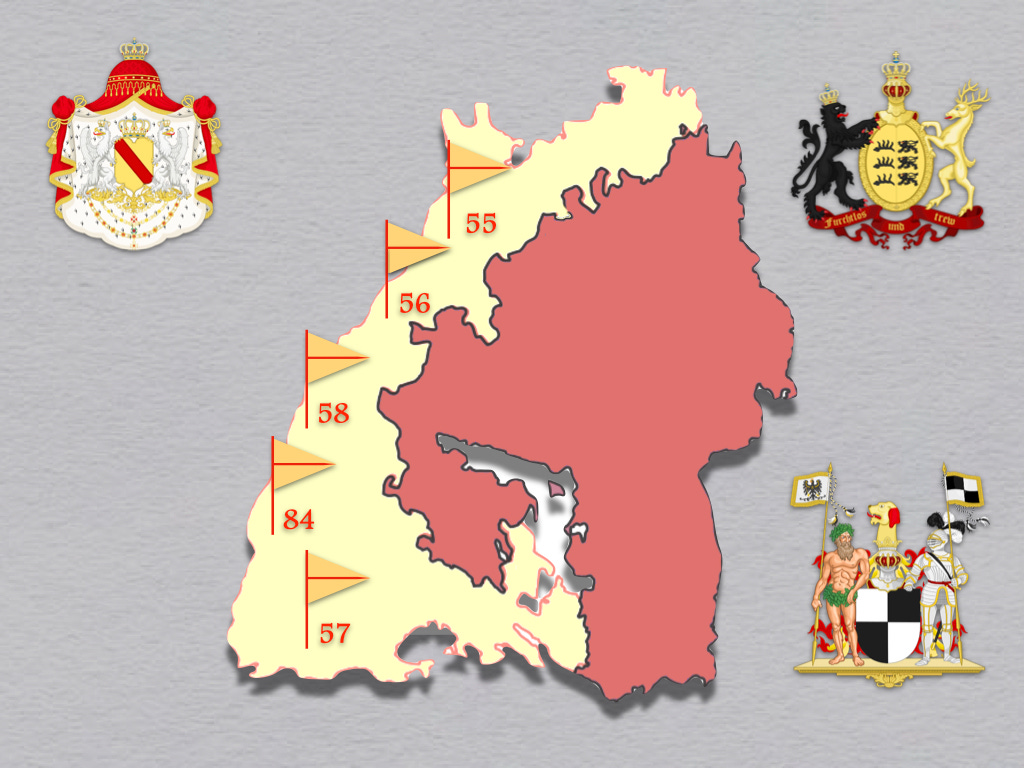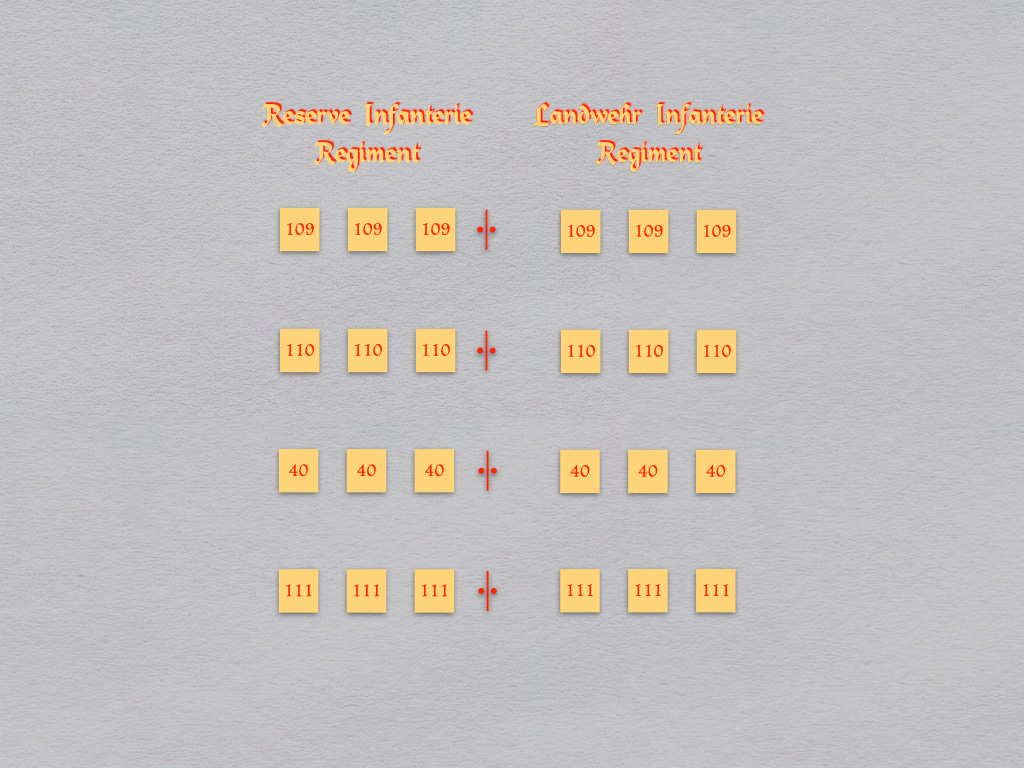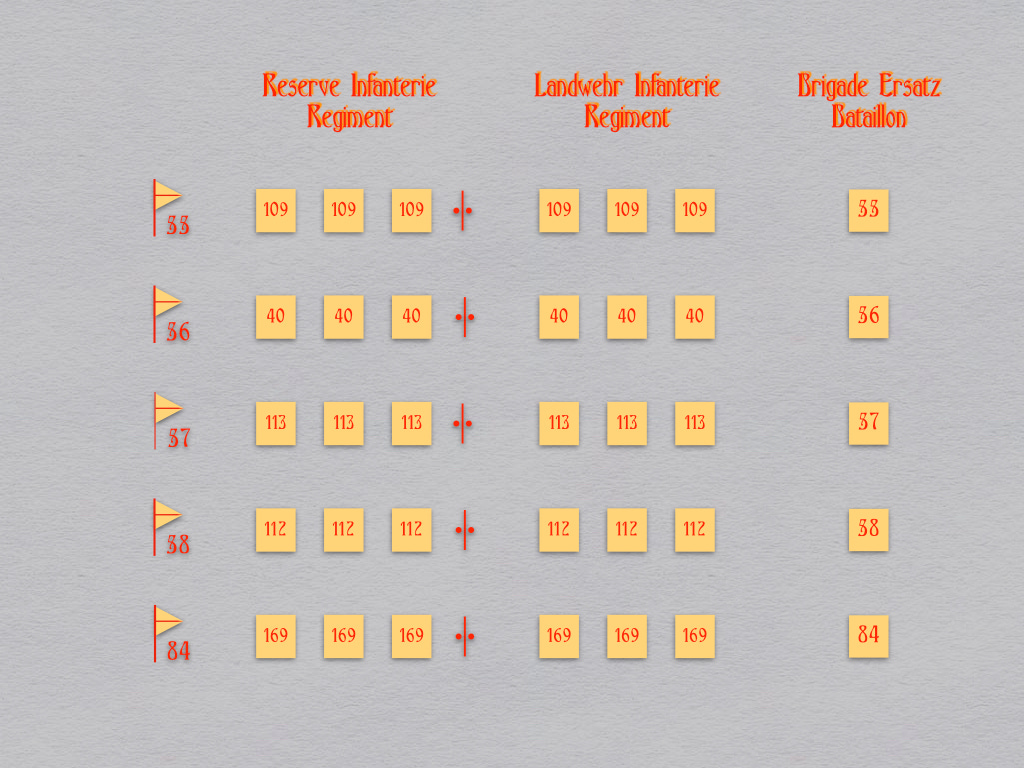In peacetime, the military contingent that the Grand Duchy of Baden provided to the German Empire possessed five infantry brigades. Four of these, numbered 55 through 58, had received their numbers in 1871, when the previously independent Grand Duchy integrated its army into that of Prussia.1 The remaining brigade, the 84th Infantry Brigade, had been raised in the course of the expansion of the German armies that took place at the end of the nineteenth century.2
All five of the infantry brigades were located in, and drew their recruits from, the territory of the XIV Army Corps. This made that peacetime formation larger than the standard army corps of the German Empire. At the same time, it ensured that all units with roots in the Grand Duchy were gathered together under the same organizational roof.
While closely identified with the Grand Duchy of Baden, the XIV Army Corps contained two units from other states. One of these was one of the youngest cavalry regiments in the German Empire, the 5th Mounted Rifles [Jäger zu Pferde]. The other was the single infantry regiment associated with the tiny Prussian exclave of Hohenzollern, the 40th Fusilier Regiment [Füsilier-Regiment Fürst Karl-Anton von Hohenzollern (Hohenzollernsches) Nr.40].
Hohenzollern, the ancestral home of the ruling house of Prussia, was nestled between the territory of the Grand Duchy of Baden and that of the Kingdom of Württemburg. With a population of about seventy thousand people of both sexes, it could not provide a sufficient number of recruits to fill the ranks of its single infantry regiment. Thus, the 40th Fusilier Regiment drew many, if not most, of its conscripts from the territory of the Grand Duchy of Baden.3 (This practice was facilitated by the placement of the home garrison of the regiment in the town of Rastatt which, while well within the borders of Baden, was a hundred or so kilometers away from most points within Hohenzollern.)
In August of 1914, the XIV Army Corps mobilized four Reserve infantry regiments and four Landwehr infantry regiments. Had the XIV Army Corps been an ordinary formation of its type, this would have fulfilled the “production quota” for second-line infantry regiments for army corps. However, when it came to peacetime infantry units, XIV Army Corps was twenty-five percent larger than a standard army corps of the day. Thus, it should have formed five Reserve infantry regiments and five Landwehr infantry regiments.
The XIV Army Corps also departed from the ideal pattern of mobilization by associating all eight of its second-line infantry regiments with just two of its five brigades. Thus, rather than getting their numbers from the senior peacetime infantry regiment in each brigade, the second-line units took their designations from the four senior infantry regiments of the army corps as a whole.
For a quick, but authoritative, introduction to the integration of the armies of the various German states into that of the Kingdom of Prussia, see “States and the Army, Part One” on the splendid blog Colonel J’s.
Eike Mohr, Heeres- und Truppengeschichte des Deutschen Reiches und seiner Länder (1806 bis 1918): eine Bibliographie (Osnabrück: Biblioverlag, 1989), page 775
The other unit with “Hohenzollern” in its name, the 13th Foot Artillery Regiment [Hohenzollernsches Fußartillerie-Regiment Nr.13], was stationed in the city of Ulm in the Kingdom of Württemberg








